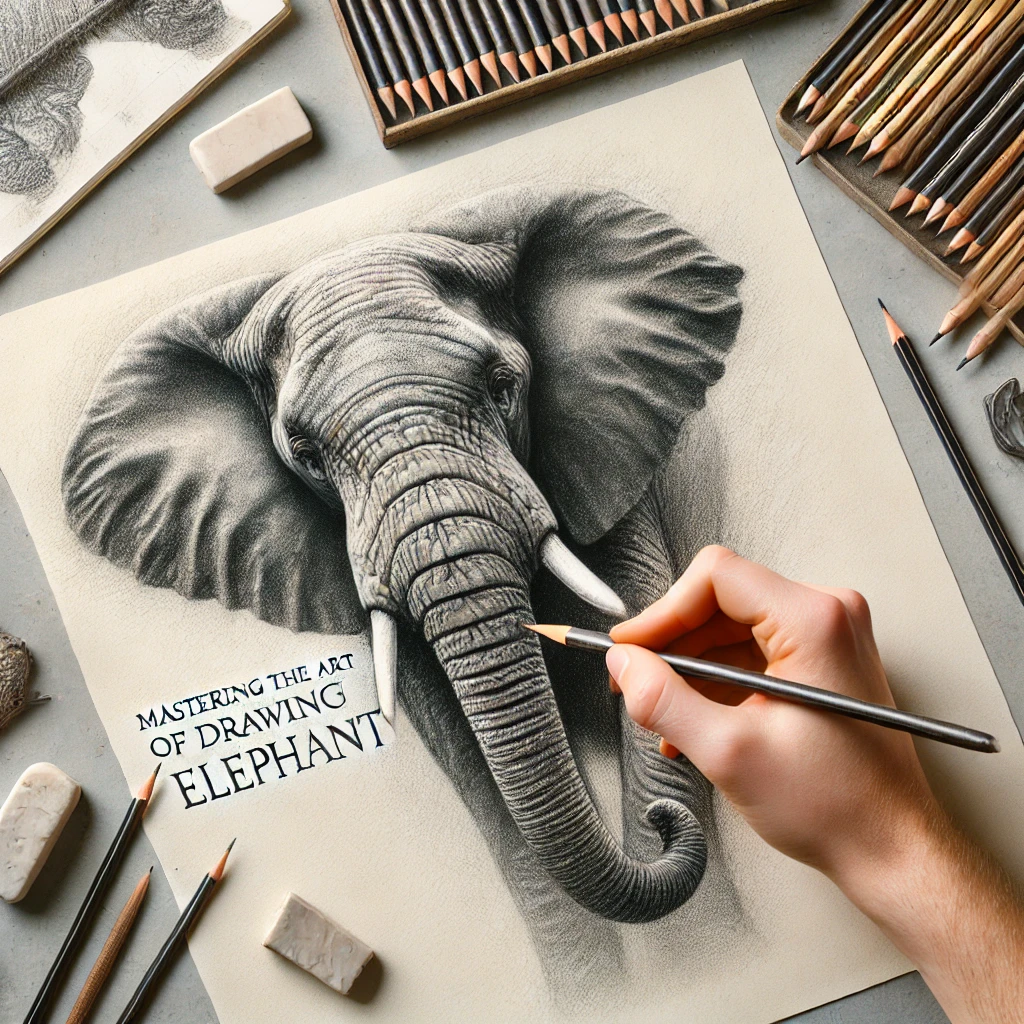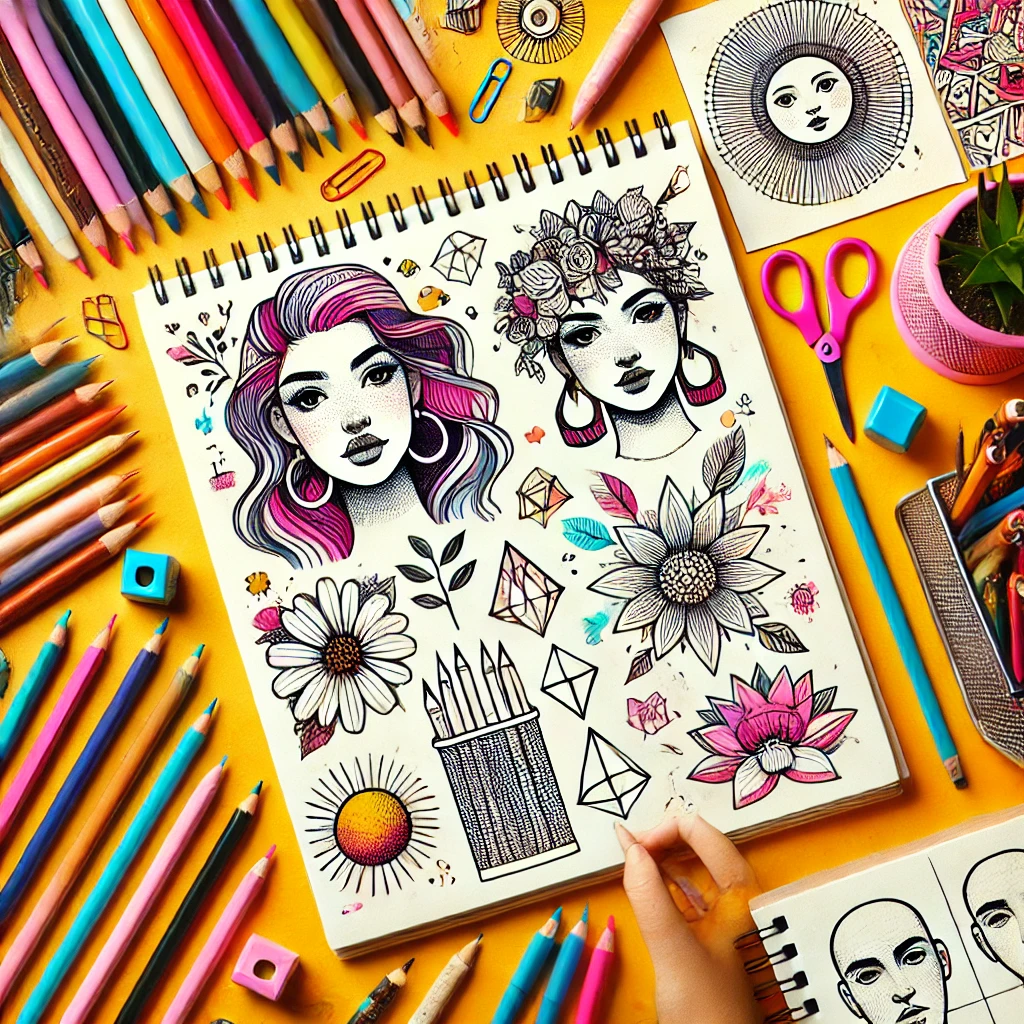Drawing an elephant can be a rewarding and challenging endeavour. Whether you’re a beginner or an experienced artist, understanding the nuances of Drawing:k4ihdmzbtqg= elephant will enhance your skills and creativity. This guide covers everything from the history of elephant drawings to advanced techniques, ensuring you capture the majesty of these magnificent creatures with ease and confidence.
History of Elephant Drawing
Elephants have long been a favourite subject in art across various cultures. From ancient cave paintings to modern illustrations, artists have depicted elephants to symbolise strength, wisdom, and grandeur.
Ancient Art
In ancient civilizations like Egypt and India, elephants were revered and often featured in religious and cultural artworks. The elephant-headed god Ganesha in Hinduism is a prime example, representing wisdom and the removal of obstacles.
Renaissance to Modern Art
During the Renaissance, artists like Albrecht Dürer included elephants in their works, showcasing their fascination with these large mammals. In modern times, elephants continue to inspire artists, appearing in everything from realistic portraits to abstract interpretations.
Tools and Materials for Drawing Elephants
Choosing the right tools can make a significant difference in your Drawing:k4ihdmzbtqg= elephant projects. Here’s a breakdown of essential materials:
Traditional Drawing Tools
- Pencils: Graphite pencils ranging from HB to 4B are ideal for sketching and shading.
- Paper: Smooth, high-quality drawing paper ensures clean lines and easy blending.
- Erasers: A kneaded eraser helps in lifting graphite without damaging the paper.
- Blending Stumps: Useful for creating smooth gradients and textures.
Digital Drawing Tools
- Graphics Tablet: A tablet like the Wacom Intuos provides precision and control.
- Software: Programs like Adobe Photoshop, Illustrator, or Procreate offer versatile tools for digital artists.
- Stylus: A responsive stylus ensures accurate lines and shading.
Pros and Cons
- Traditional Tools: Offer tactile feedback and a classic feel but can be less forgiving.
- Digital Tools: Allow for easy corrections and experimentation but require a learning curve.
Step-by-Step Guide to Drawing an Elephant
Creating a lifelike elephant drawing involves several steps. Follow this guide to bring your Drawing:k4ihdmzbtqg= elephant to life.
1. Basic Shapes
Start by sketching the basic shapes that form the elephant’s body. Use circles for the head and body, and ovals for the ears and legs.
2. Outline the Form
Connect the shapes with smooth lines to outline the elephant’s form. Pay attention to the proportions, ensuring the legs are sturdy and the trunk is prominent.
3. Add Details
Begin adding details like the eyes, tusks, and wrinkles. Elephants have distinct features that add character to your drawing.
4. Shading and Texture
Use shading to create depth and texture. Focus on areas like the trunk, ears, and legs to highlight the elephant’s rugged skin.
5. Final Touches
Review your drawing for any missing details or areas that need refinement. Add highlights to bring your elephant to life.
Common Mistakes and How to Avoid Them
Even seasoned artists can make mistakes when drawing elephants. Here are some common pitfalls and how to steer clear of them.
Proportional Errors
Misjudging the size of the trunk or ears can distort the elephant’s appearance. Use reference images and measure proportions carefully to maintain accuracy.
Overcomplicating Details
Adding too many details too soon can make the drawing cluttered. Focus on the main features first, then gradually add finer details.
Neglecting Texture
Elephants have unique, rough skin textures. Ensure you incorporate shading and texture techniques to capture this aspect effectively.
Advanced Techniques for Elephant Drawing
Once you’ve mastered the basics, explore advanced techniques to elevate your Drawing:k4ihdmzbtqg= elephant.
Shading and Blending
Use cross-hatching and blending to create realistic shadows and highlights. This adds depth and dimension to your drawing.
Perspective and Foreshortening
Experiment with different angles to make your elephant appear dynamic. Foreshortening can create a sense of movement and realism.
Incorporating Light and Shadow
Understanding how light interacts with the elephant’s body helps in creating more lifelike drawings. Pay attention to light sources and how they cast shadows.
Digital vs. Traditional Drawing: Elephants
Choosing between digital and traditional methods depends on your preferences and project needs. Here’s a comparison to help you decide.
Traditional Drawing
- Advantages: Tangible results, no need for digital tools, and a classic aesthetic.
- Challenges: Limited editing options and potential for mistakes that require starting over.
Digital Drawing
- Advantages: Easy corrections, versatile tools, and the ability to experiment with colours and textures.
- Challenges: Requires investment in technology and a learning curve to master software.
Incorporating Symbolism and Emotion in Elephant Drawings
Elephants symbolise various emotions and concepts. Incorporating these elements can add depth to your Drawing:k4ihdmzbtqg= elephant.
Symbolism
- Strength and Wisdom: Use powerful poses and serene expressions to convey these traits.
- Family and Community: Depict elephants in groups to highlight their social structures.
Emotion
- Gentleness: Soft lines and subtle shading can portray the elephant’s gentle nature.
- Majesty: Emphasise the elephant’s size and presence to showcase its grandeur.
Inspiration and References
Finding inspiration is key to creating stunning elephant drawings. Here are some sources to spark your creativity.
Nature and Wildlife Photography
High-quality photos provide accurate references for anatomy and texture. Observing real elephants can inspire realistic and dynamic poses.
Art Galleries and Online Platforms
Explore works by other artists to see different styles and techniques. Platforms like Pinterest and Instagram are excellent for discovering new ideas.
Books and Tutorials
Books on animal drawing and specific elephant illustrations can offer step-by-step guidance and inspiration.
Showcasing Your Elephant Artwork
Sharing your Drawing:k4ihdmzbtqg= elephant with others can be fulfilling and provide valuable feedback. Here are some ways to showcase your work.
Social Media
Platforms like Instagram, Twitter, and Facebook allow you to reach a wide audience. Use hashtags related to elephants and art to increase visibility.
Art Galleries and Exhibitions
Participate in local galleries or art fairs to display your work. This can help you connect with other artists and potential buyers.
Online Portfolios
Create an online portfolio using websites like Behance or your own personal website. This makes it easy to share your work with a global audience.
Conclusion
Mastering Drawing:k4ihdmzbtqg= elephant involves understanding their anatomy, utilising the right tools, and applying both basic and advanced techniques. By avoiding common mistakes and incorporating symbolism and emotion, you can create compelling and lifelike elephant drawings. Remember to seek inspiration from various sources and confidently showcase your artwork to inspire others. Keep practising, and let your creativity flourish as you capture the beauty and majesty of elephants in your art.
Tips for Success
- Practice Regularly: Consistent practice improves your skills and builds confidence.
- Seek Feedback: Share your work with others to gain constructive criticism and new perspectives.
- Stay Inspired: Continuously explore new styles and techniques to keep your art fresh and exciting.
By following this comprehensive guide, you’ll be well on your way to creating stunning Drawing:k4ihdmzbtqg= elephant artworks that capture the essence of these incredible animals.
Further Reading
- “The Art of Animal Drawing” by Ken Hultgren: A great resource for learning animal anatomy and drawing techniques.
- “Elephant Art: The Masters of the Wild” – An online gallery showcasing various elephant drawings from different artists.



